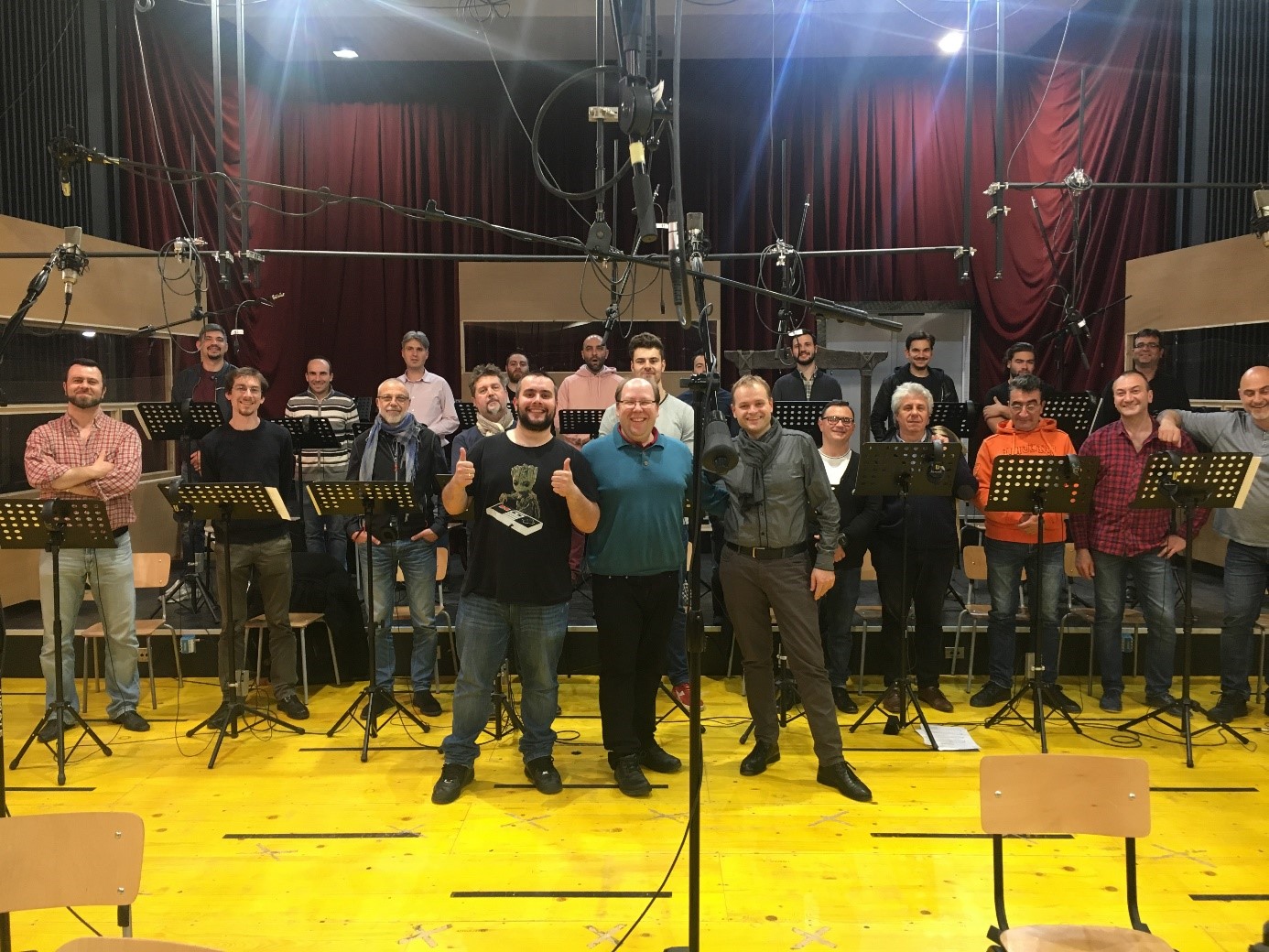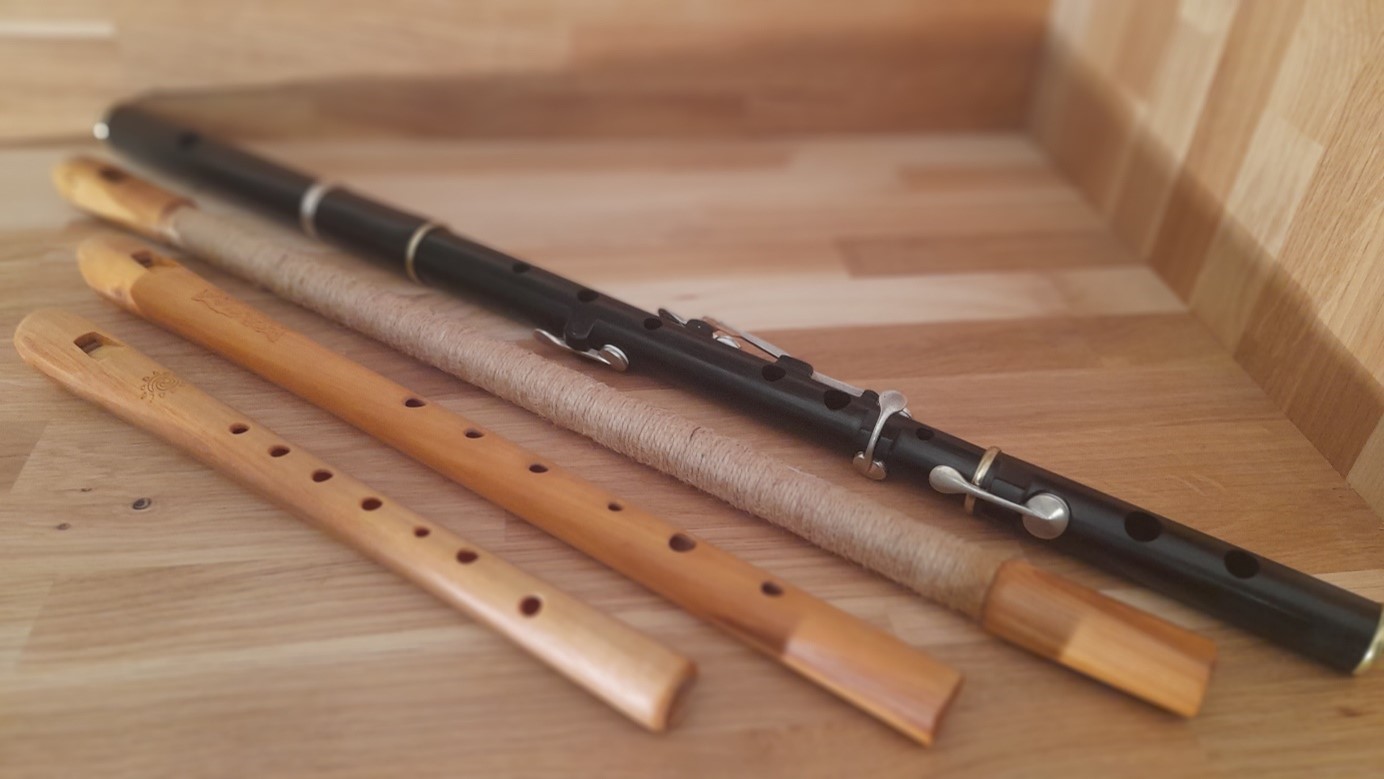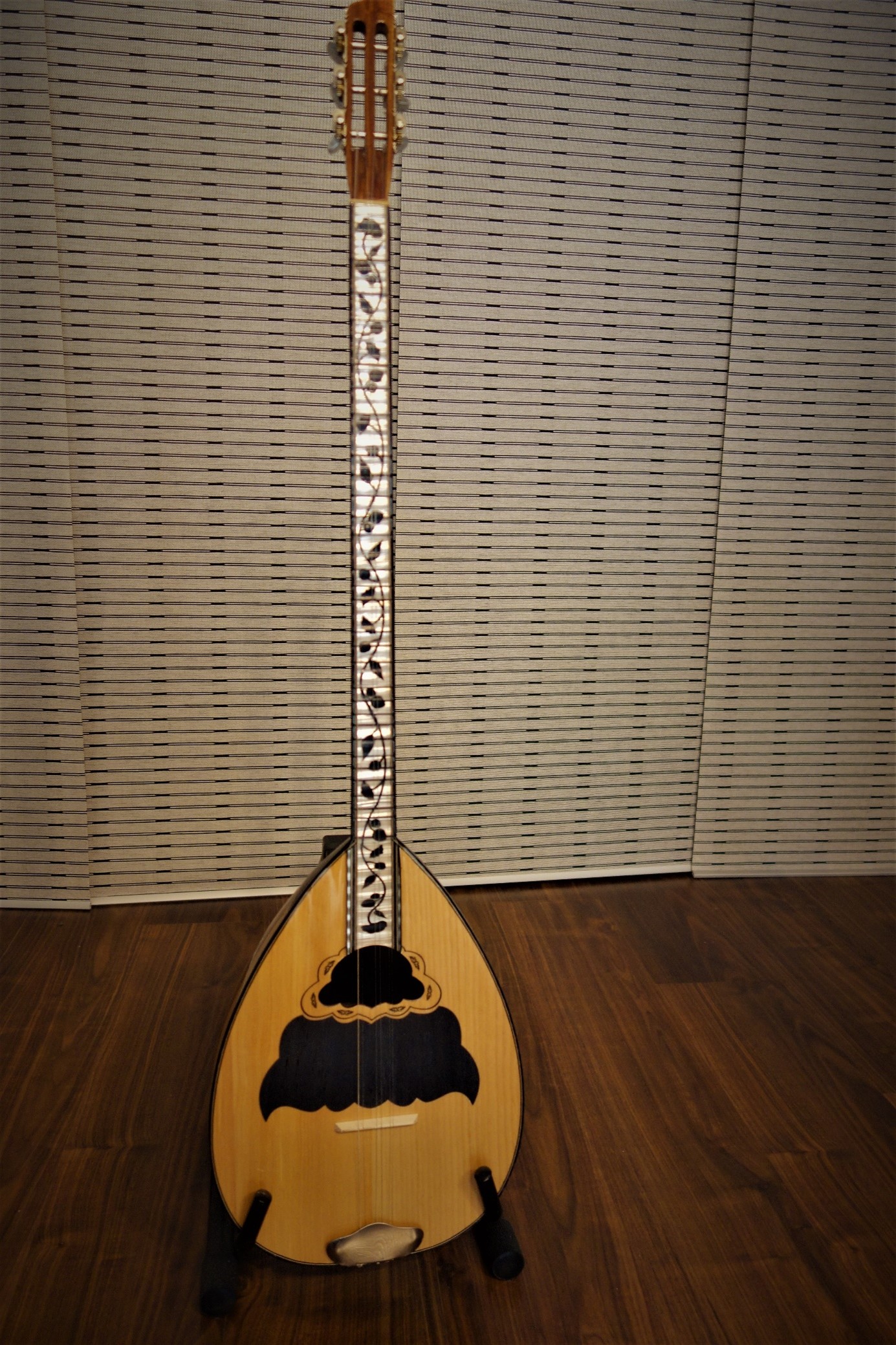Music of the Rus and Abbasids Civilizations
Nugel Henning shares his experience recreating the music of these historic civilizations

Project: Age of Empires IV
Client: Relic Entertainment, World’s Edge
We Did: Music Composition • Orchestra, Choir, Soloist Recordings
Age of Empires IV was released to roaring success. The game remains on Steam’s Top Sellers list months after its release. Fans and reviewers alike have lauded the graphics, asymmetrical gameplay, and most importantly for us, the music. Scrolling through Steam reviews mentions of the soundtrack can be read repeatedly, and reviewers as well have taken note of it, saying things like “the soundtrack… mixes beautifully from the menu music and evolves through the ages” (PC Gamer), and “musically speaking, AoE IV is up to series standards” (Tom’s Guide).
It has certainly been exciting for the Dynamedion team to be part of such a stellar project that has been years in the making. The music is dynamic, based on the civilization and Age the player is currently. Great care went into this, with loopable cues to ensure that whenever a battle sequence began, or themes changed based on each Age, the music would flow seamlessly and sound like all part of a single composition. For each track, composers had to write four different layers (Explore, Tension, Combat, Rare) including a variety of segments, intros, exits, and transitions between the four Ages.
Read more about Dynamedion and the Age of Empires IV soundtrack here.
Henning Nugel was one of Dynamedion’s staff composers who worked on the score. Henning is from Dortmund, Germany and has written a great deal of scores on behalf of Dynamedion, including the Settlers series, Total War – Thrones of Britannia, Marvel Super War, Smite – Heroes of the Wild and Dark Crystal – Age of Resistance. Henning is not just a composer but also an instrumentalist, playing keys, guitar, fiddle, and a variety of instruments from around the world, and is an expert on medieval and folk styles.

For the soundtrack, Henning was tasked with conquering the music for the Rus and Abbasid Dynasty civilizations. He wrote over 180 minutes of music and played on 25 different instruments himself. Here he discusses his experience working on a soundtrack that called for someone with his exact background. All photos were provided by Henning or the respective artists.
Henning Nugel talks Age of Empires IV
There have certainly been quite a few projects where I mingled folkloristic medieval stylistics with orchestral music (Settlers Series, Valhalla Hills, Thrones of Britannia to name a few). But Age of Empires IV is definitely the biggest project I have worked on, ever! The game audio system is so incredibly sophisticated and complex; I have never encountered anything like it during my whole 20 years of working in the game audio world. It’s like one gigantic constantly changing soundtrack that fits everything that happens on screen. As composers – and I think I can speak for all of us – we really put our heart blood into creating music that could hold up to this vision of a game.
Music for the Rus
One of the tricky things with medieval music is that wherever you turn to in Europe there’s basically the same kind of instruments. You got your lutes, some kind of fiddle, recorders, etc., but you really have to dig deep to find instruments that clearly distinguishes one civ from another. When I started with the Rus we already had the music of the French, the English and the Holy Roman Empire and Relic’s Music Lead Lin Gardiner was adamant that I find a way to set the Rus apart from all the other factions.
Choir
Very early on it was clear to me that we needed a basso profundo choir for the Rus. These super-low male choirs are as characteristic for Russian classical music as the balalaika is for Russian folk tunes. So I contacted George Strezov who is a kind of Bulgarian wunderkind being a composer, conductor, sample library developer, owner of an orchestra and choir agency but most of all just a down-to-earth, super-nice guy.
I asked George about Russian choir music and a few moments later I received from him a bunch of YouTube links with a broad variety of examples. I also used his sample library, Wotan, which features the voices of a basso profundo choir from Sofia. It sounded so good that we actually hired George to conduct this very choir at the live recording sessions. For the Dark Age there’s only one singer of the choir doing very low “Mmh”-lines and through the Ages the choir gets fuller and sings more intricate phrases.

Strings and winds
While the low choir got me closer, I had to look for further inspiration to achieve the sound of the Rus civ. Of course, a balalaika was a must. I also got a wonderful mandolin-like instrument, a domra and set up my trusty Irish bouzouki with a different tuning and created something like an ancient balalaika for the first two Ages.
One of the key concepts was to have instruments evolve through the different Ages. In Castle Age the ancient balalaika is substituted with the regular versions of the balalaika and domra. From Siberia I received two Russian recorders called svirels in different keys and also a kalyuka which is a Russian overtone flute. I also used a wooden traverse flute.

Regarding bowed strings instruments I opted for some low solo fiddles that I strung with octave strings through the first two Ages. They are accompanied by higher solo violins with more intricate lines in Castle Age with a hint of a small orchestra strings section in the background.
In the Imperial Age we have the full-blown cinematic orchestra and choir recorded in Budapest and Sofia respectively. There’s also some lovely solo horn passages while the folkloristic instruments play only a subdued role.
A touch of melancholy
Russian music has a tendency toward the melancholic so I tried to work this more sombre spirit into my music as well. All of this helped a lot to make the Rus sound distinctly different from the other European civs.
I really enjoyed my trip into the musical history of the Rus. Though I used instruments that were partly existent at that time, I also invented a lot of playing techniques and phrasings to fill out the score in a cinematic way. It’s not really about accuracy but more about authenticity, the feel of things. In the end this is more or less my interpretation of Russian music and how it makes me feel.
Music for the Abbasid Dynasty
Creating music for the Abbasid Dynasty required a deep dive into Arabian music and instruments. To make it distinguishable and notably different from the Delhi Sultanates this needed a new palette of instruments which would give us a typical Arabian feel. I got lucky at the Orientmusikhaus in Berlin where the proprietor Metin Ürgen let me check out all the instruments and told me about their usage in Arabian folklore music. After about five hours testing and checking I left the shop with an oud, a bouzuq, and two handfuls of woodwinds.
Strings
The oud is perhaps one of the oldest Arabian instruments and quite likely the grandfather of the classical guitar. It has no frets and comes with 11 strings tuned in pairs except the low bass string. It features most prominently in Age II but also sparsely in the Dark Ages. At times I bowed the low bass string with an old cello bow to get a nice dark raspy bass drone for the Explore and Tension layers that comes and goes. The oud is replaced by a classical guitar in Age 4 for a feel of development.

The bouzuq is also an Arabian plucked string instrument and perhaps the predecessor of the modern-day bouzouki. The regular bouzuq only has two pairs of strings but Metin retrofitted mine with a third pair of strings to give me more choices for different sounds. It has frets attuned to the Arabic scales (the Maqams) so it can play microtones (e.g. a note between E and F). I used these microtones here and there for the typical Arabic feel and you can hear the instrument a lot in the Dark and Feudal Ages. I also bowed this instrument with a cello bow for the gritty sound in Dark Ages Tension. For the Castle Age I used a modern version of the bouzuq, a bouzouki with a different tuning. It has a more refined and fuller sound but no microtones. I also used a lot of different picks (regular, but also metal, wood, felt).

Playing string lines in octaves is a very common feature in today’s Arabic music. For the Castle Age, I used a regular violin – which had belonged to my grandfather who was a great player himself – but tuned G D g d for the typical Arabian violin tuning. My custom-made octave viola features as a counterpart an octave lower. By tuning it differently this one can get down to cello tuning and create a really gritty dark sound. This combination was perfect for the Castle Age where we are at a more advanced stage but still not at the highest form of development of this civ. The Imperial Age on the other hand features mainly orchestral ensembles. The octave viola can also be heard in its darkest and lowest form throughout the Feudal Age layers as a kind of precursor to the Castle Age strings.

Winds
There’s a lot of woodwinds used through all the ages. There are the high and low kaval flutes in the Dark Age and Feudal Age. The Mizmar a double reed instrument I got from Egypt in Dark Age and its counterpart the Zurna in Feudal Age. Really loud and piercing instruments that were great for the Tension and Combat layers. Years ago, I bought a Duduk and in Metin’s shop I got a low Mey as a kind of lower counterpart. Though they are also double reed instruments they sound a bit like wailing clarinets. So in this context I also used a strange nameless flute I got some time ago that is played with a single reed and also has this kind of clarinet tone. Ney flutes are used in the Dark and Feudal Age for additional breathy grit. In the Dark Age there’s also a bass recorder – a huge instrument. You can get these really cool ethnic flavours out of this instrument when you don’t play it like a regular recorder. The Imperial Age features my trusty wooden traverse flute for a little more refined sound. But we still have the occasional duduk here and there.

Vocals
As Arabic music is predominantly vocal, I was extremely happy that we found four lovely solo vocalists – one for each age: Renowned singer Memed Capan, with his 80-year-old voice had just the right timbre perfect for the Dark Age; for the Feudal Age there is Gediz Çoroğlu, a fantastic singer from Istanbul, who performed gorgeous Arabic phrases in his unique singing style; London-based singer and composer Hayat Selim, born in Cairo with Arabic music and singing part of her DNA, a godsend for this project as she was the perfect match for the castle; then finally Clara Sorace for the Imperial Age, the most advanced Age – her vocals are heard in countless trailer music albums and most recently Jasper Kyd’s Assassin’s Creed score – her technique is absolutely stunning and she really made the most cinematic sounding Age come to life.
There’s no traditional brass in Arabic music. For continuity between the civs and also for making it all more cinematic I used orchestral brass in the later Ages. Brass and strings were recorded live in Budapest. Especially the string players had a lot of fun playing the rather fast and agile Arabic lines I had written for the Imperial Age.
Uncharted territory
The Abbasid Dynasty civ forced me (again) to dive into for me personally totally unchartered musical territory. Of course, this score is and cannot be anything else than my own interpretation of what Arabic music feels and means to me. But I definitely learned a lot and my studio backwall got some more lovely instruments to showcase.
Final thoughts
Of course, all of this would not have been able without the help of many people. I’m deeply indebted and thankful to Relic Entertainment and especially Music Lead Lin Gardiner and World’s Edge studio, as well as the whole Dynamedion team, including my brothers-in-arms Tilman Sillescu, Armin Haas, Alex Röder and also our ProTools specialist Christian Wirtz and the never-tiring orchestra wrangler and live artist handler Marcell Kelemen. I’d also like to thank the rock in a sea of raging notes, our Orchestrator David Christiansen, the lovely vocal artists that made my Abbasid Dynasty music come to life: Clara Sorace, Hayat Selim, Gediz Çoroğlu and Memed Capan, George Strezov and his fantastic basso profundo Sofia Session Choir that really made all the difference for my Rus music, and our Budapest orchestra musicians and conductor Peter Pejtsik.
Thanks a lot for taking the time with me and, of course, “Wololo!”
FIRST REACTIONS
“…amazing job, seriously. The ingame music is a Masterpiece. It gives you chills, it lets you feel heroic, it sets the mood, the tone. Rarely I have seen anything comparable…Well done.”
•
“Sound design and music design of this game is astounding… 10/10”
•
“The voice acting and music in this game is just 🖤“
•
“EXCELLENT JOB to everyone involved in music and sound.“
Are you also interested in working together with Dynamedion? Check out our services and tell us more about your project!




